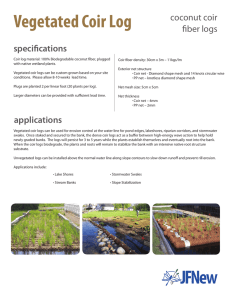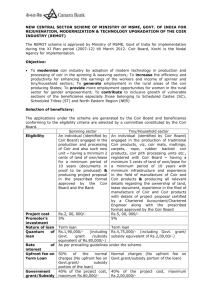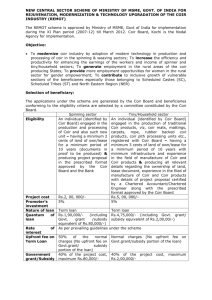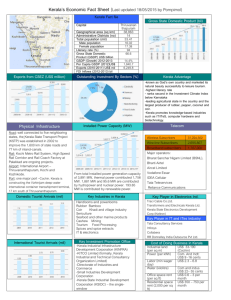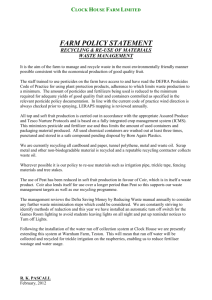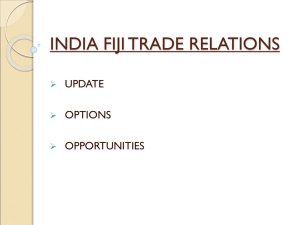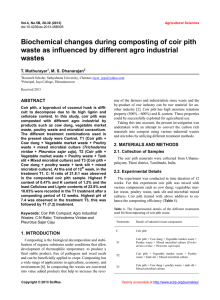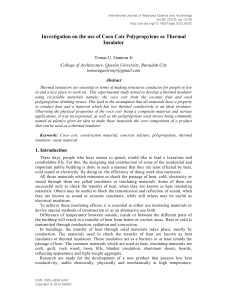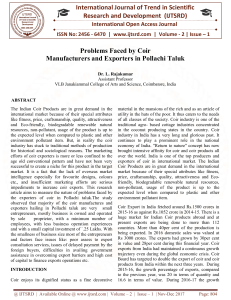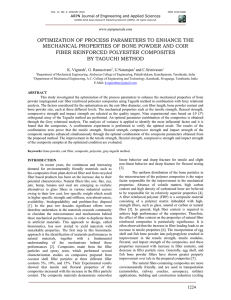Time Trends in the Performance of the Coir Industry in
advertisement
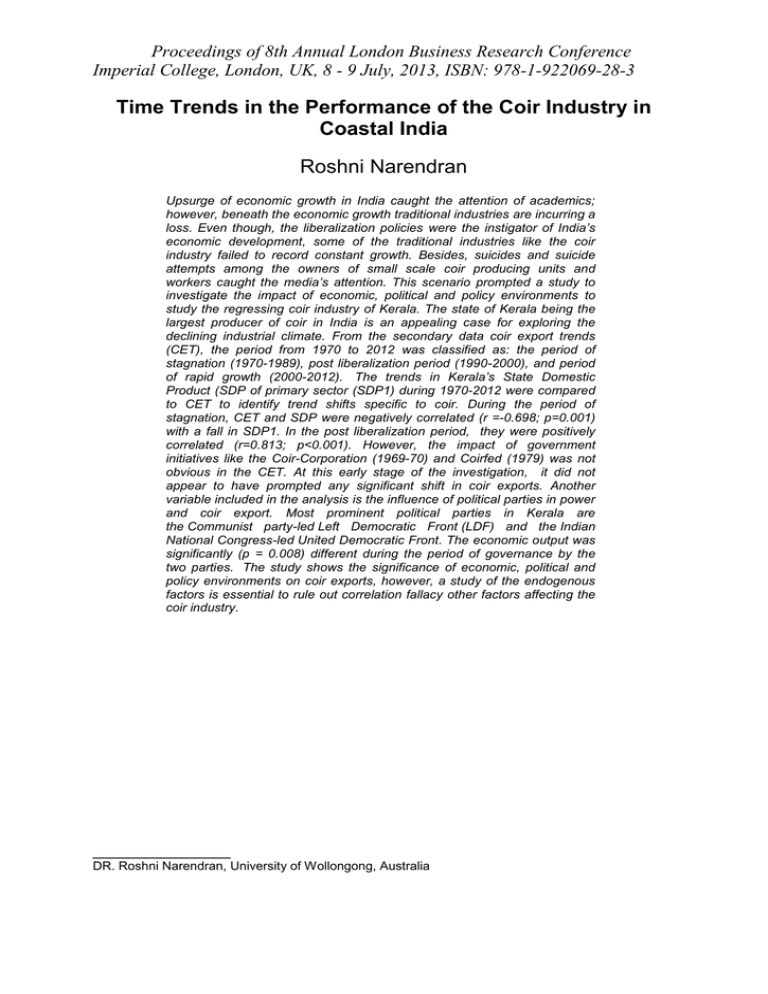
Proceedings of 8th Annual London Business Research Conference Imperial College, London, UK, 8 - 9 July, 2013, ISBN: 978-1-922069-28-3 Time Trends in the Performance of the Coir Industry in Coastal India Roshni Narendran Upsurge of economic growth in India caught the attention of academics; however, beneath the economic growth traditional industries are incurring a loss. Even though, the liberalization policies were the instigator of India’s economic development, some of the traditional industries like the coir industry failed to record constant growth. Besides, suicides and suicide attempts among the owners of small scale coir producing units and workers caught the media’s attention. This scenario prompted a study to investigate the impact of economic, political and policy environments to study the regressing coir industry of Kerala. The state of Kerala being the largest producer of coir in India is an appealing case for exploring the declining industrial climate. From the secondary data coir export trends (CET), the period from 1970 to 2012 was classified as: the period of stagnation (1970-1989), post liberalization period (1990-2000), and period of rapid growth (2000-2012). The trends in Kerala’s State Domestic Product (SDP of primary sector (SDP1) during 1970-2012 were compared to CET to identify trend shifts specific to coir. During the period of stagnation, CET and SDP were negatively correlated (r =-0.698; p=0.001) with a fall in SDP1. In the post liberalization period, they were positively correlated (r=0.813; p<0.001). However, the impact of government initiatives like the Coir-Corporation (1969-70) and Coirfed (1979) was not obvious in the CET. At this early stage of the investigation, it did not appear to have prompted any significant shift in coir exports. Another variable included in the analysis is the influence of political parties in power and coir export. Most prominent political parties in Kerala are the Communist party-led Left Democratic Front (LDF) and the Indian National Congress-led United Democratic Front. The economic output was significantly (p = 0.008) different during the period of governance by the two parties. The study shows the significance of economic, political and policy environments on coir exports, however, a study of the endogenous factors is essential to rule out correlation fallacy other factors affecting the coir industry. ________________ DR. Roshni Narendran, University of Wollongong, Australia


